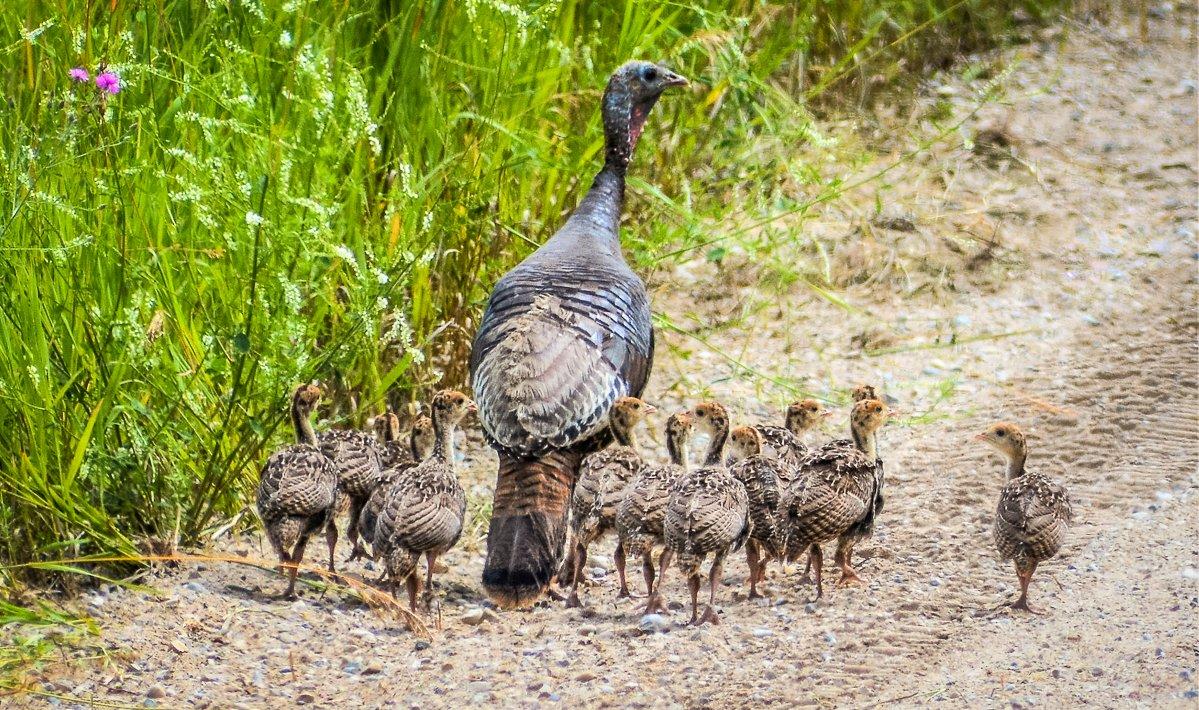With the earliest states checking in, weather conditions were favorable, but life is still tough for little turkeys
Every day was a Saturday this recent turkey season.
The ongoing pandemic sheltered folks in place. The result: more time to hunt. By many accounts, designated public-land parking areas looked like used-truck lots. Hunting license and turkey permit sales, state depending, increased. That's a good thing for cash-strapped wildlife agencies in need of resources.
Harvest totals exceeded previous records — in some cases, dramatically. Sure, tagging a bird is a celebratory thing, no doubt. The question is: Can existing populations, on which this season's hunting regulations were based, sustain heavy statewide and regional increases in kill numbers?
As always, successful brood rearing will replenish hunted populations. But how will wildlife managers — who set state seasons based on this data — react and adjust? Reduce limits next season? Stay the course?
Nesting and Brooding Success
Down South, hatch data is just coming in. Other parts of the country will see a steady increase in information throughout the rest of the summer into fall. Brood surveys take place annually through June, July, and August, and in truth, some hens are still re-nesting. Late, yes. But not uncommon. I recently caught up with Bret Collier and Mike Chamberlain, two of our leading turkey biologists and wildlife researchers.
Collier, based in Louisiana, reported seeing a late hatch as recently as July 20. He's currently watching several active study sites: one in the southeastern portion of the state (SELA) and one in the west-central region (WC).
They are pretty different [habitats], as SELA is a more fragmented region, Collier says, with moderate human population density, smaller property sizes, etc., while WC is a huge block of national forest/military installation lands.
Chamberlain, who does his work in Georgia, recently told me: On the study sites here, we saw nest success slightly less than 20%. We've seen nest success across the Southeast averaging about 22% since around 2015, so I'd say this year was pretty much the same.
Hatching poults encounter all sorts of challenges after they leave nests.
As far as predators go, they are the primary cause of brood failure, says Chamberlain. Predators that take poults are diverse, ranging from all sorts of mammals to birds of prey, and even snakes when poults are very young.
Brood success averaged 40% on my sites, Chamberlain says, which again, is about normal. We've seen about 35% brood success since 2015, success being measured as at least one poult survived the first month of life. So we're losing about 80% of nests, and about 60% of broods fail within the first month. This year's data on my sites pretty much shows that same trend.
According to Collier, WC ran right at 20% nest success for the year; and SELA was at 54% for first nesting attempts and 14% on second attempts, so about 46% overall. He says 46% is quite high, higher than any previous study he's done.
[Read more: Are You Seeing Any Poults?]
The Weather Effect
Weather is always a major factor in brooding success. Chamberlain says, Honestly, the weather was pretty good for brood survival in Georgia. We had weeks of low to no rainfall, and I can't recall a single night where temperatures dropped to levels that I'd even be concerned with. I had hoped brood success would be better, but alas, lots of things eat poults.
Collier adds, Brood success across both study areas was generally in line with what I would have expected. About 35% of broods had at least one poult survive to 28 days. Echoing Chamberlain, he says, We got rains at the right time this year in WC, and then it got dry right on time of first hatch. SELA got hammered a good bit right when nests were coming off, but I don't think that one day of rough weather had any impact.
The Predator Factor
Make no mistake, predators influence hatching success.
As far as predators go, they are the primary cause of brood failure, says Chamberlain. Predators that take poults are diverse, ranging from all sorts of mammals to birds of prey, and even snakes when poults are very young.
Collier says, We had about five depredations of nests by snakes in WC, caught in the act, and we think probably a handful more were likely snakes. Saw some raccoon and possums on nests as well. He indicates that hens lost a couple of nests to human disturbance, too.
The Harvest Impact: Hunter Pressure
We had a known harvest of more than 40% of every male in the population this season, Chamberlain says. In other words, if you counted every single male (banded and GPS-marked) that could possibly have been harvested, more than 40% were actually reported to us as being harvested. So, it appears, at least on my study sites, that [Georgia's] harvest rate was quite high.
In Louisiana, harvest of males was very site specific, Collier says. I had one trapping location where 100% of males were shot, and another where the two males lived, so in my area it really depends on where the males were [and/or] whether hunting was allowed. On average, Collier saw a 32% gobbler harvest rate.
[Read More: Multiple Turkey Harvest, License Sale Records Set in 2020]









